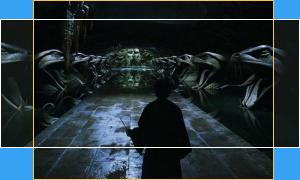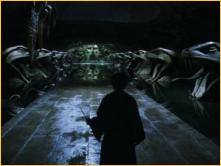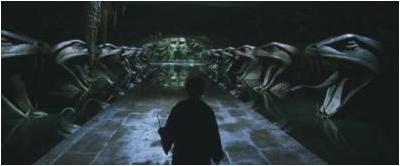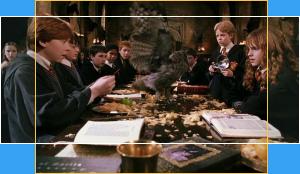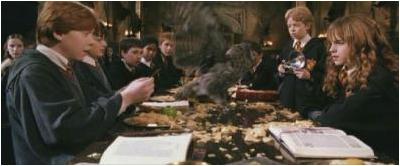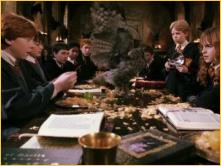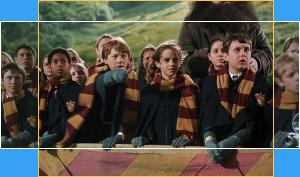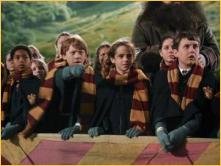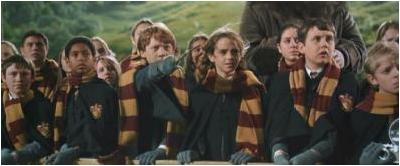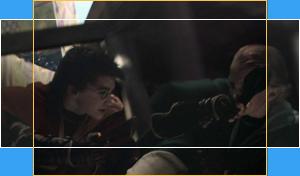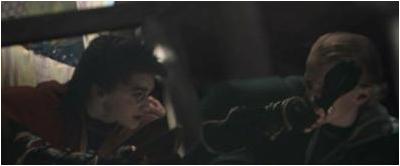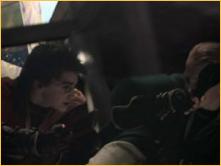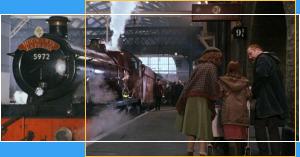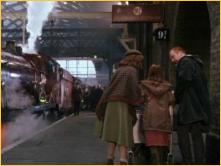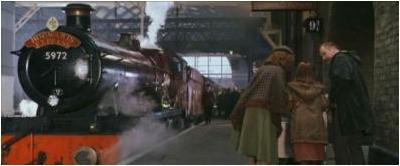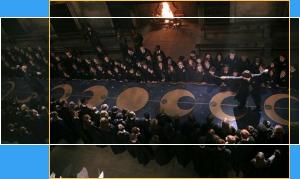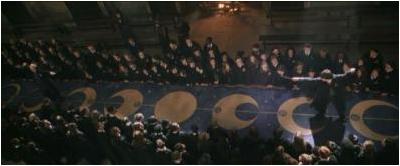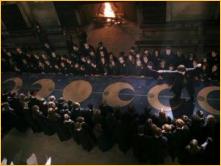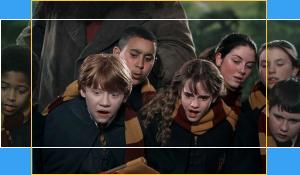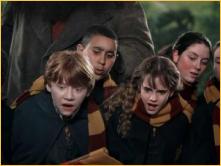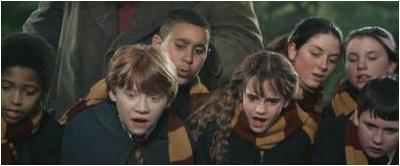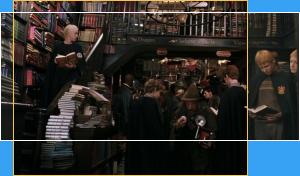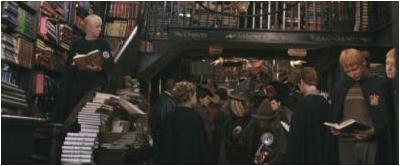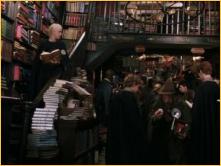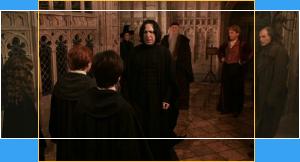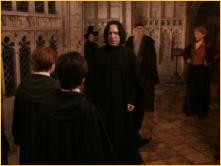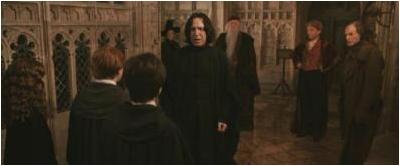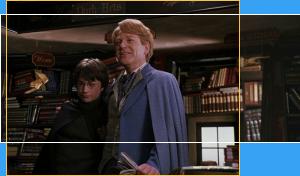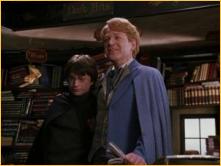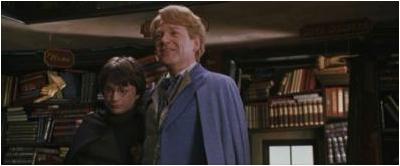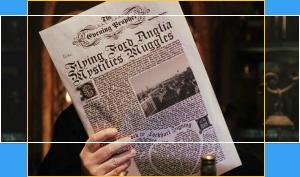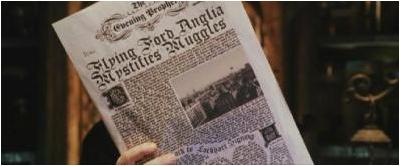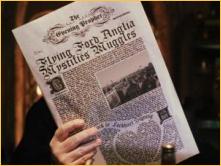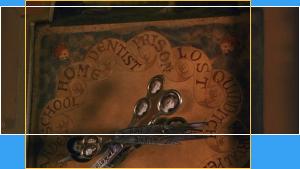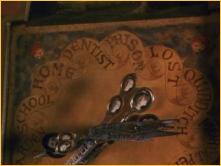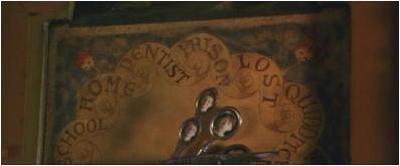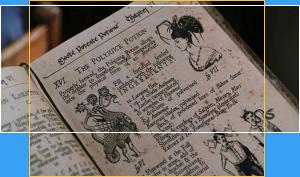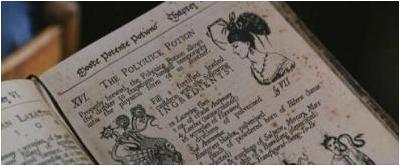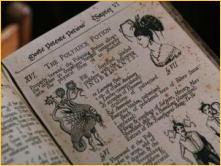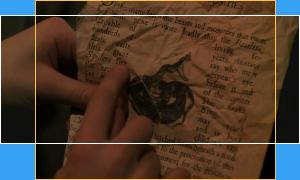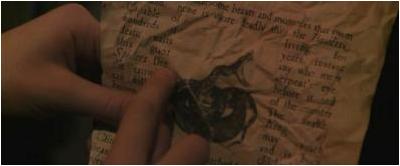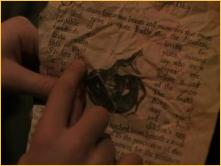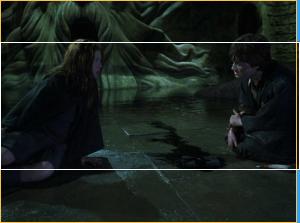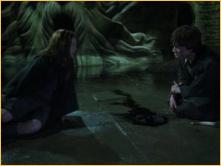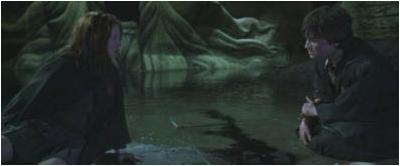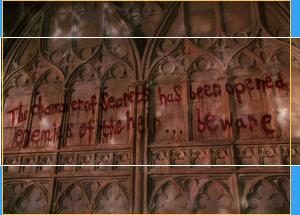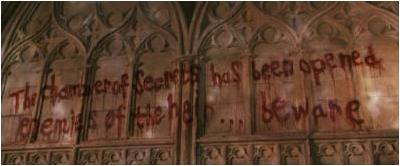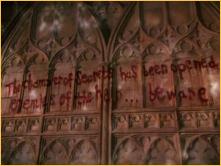 |
CoS: Why Widescreen? |
 |
 |
 |
Back to Front Page |
 |
Please note that this page will not look right on computer screens set up for less than 1024x768 full-screen display
Because a full screen version of the Chamber of Secrets DVD is not available here in the UK, you owe a huge debt to Richelle Votaw for doing an incredible amount of work in preparing all of the full screen shots you see below. The pictures you see here are just a fraction of the ones Richelle and I originally prepared and discussed, and based on which I made my final selections. Nevertheless, Richelle is not responsible for any of the conclusions I've reached, and if you disagree with any of the comments here, it's all my fault. From the e-mails I exchanged with Richelle while we were preparing the pictures, she probably disagrees with my conclusions anyway! Just like with Philosopher's Stone, the yellow boxes around pictures show the "fullscreen edition", and the white boxes the widescreen picture. These are not approximations - these are actual captures from the two versions which have not been changed other than to compensate for digital distortions. If you click on the original screen captures on this page, a larger version of the same picture will appear in a new window. (Note: there are no larger versions of the superimposed pictures which are included for comparison purposes, so don't bother clicking on them!). I feel quite strongly about this movie's presentation, and so rather than just show superimposed pictures as I did last year, I'm going to include the original separate pictures as well, and make some comments which lead to only one possible conclusion:
Widescreen Is The Only OptionThere are three main reasons widescreen advocates such as myself give for the superiority of widescreen transfers:
It's what the director wanted us to see - the shot was set up deliberately The third is self-evident and the fourth is very technical, so the main thrust of this page is to show why the first two apply to this movie. 1. Image composition: Cinematography 101 There is a principle in visual communications known as the Rule of Thirds. It applies not only in widescreen movies, but any size or ratio picture and all other kinds of visual compositions, such as paintings, drawings or photography, and even interior design and classical architecture. I won't waste time explaining the Rule in detail, but the principle is that human perception is drawn to or near to the intersection of imaginary lines dividing an image in thirds across and down. The first item in almost all photography manuals explains the Rule, and this is the reason why most mid-range photographic and video cameras have these points marked in the viewfinder (it is a common misconception that the markings are there to indicate the centre of the picture area). If that doesn't make sense, or if you've never heard of the Rule of Thirds, read this before continuing with the rest of this page, because I'm going to be returning to the subject fairly often.
2. Lost information: Widescreen has much more going on in the picture ... It goes without saying that if you start off with a picture that's over twice as wide as it is tall (true widescreen is at a ratio of 2.35:1) and shrink it down to a picture that's only just wider than it is tall (standard TV screens are at a ratio of 1.33:1 or 4:3), something's got to give. Either you need to squash the width of the wider picture or you need to crop almost half of it, in order for it to fill the TV screen. With both Harry Potter films, as with a great many others, it's not quite that simple (little in life is!). Just like Philosopher's Stone, Chamber of Secrets was filmed using a process known as Super 35 (see this site for more information). This means that the film negative includes information above and below the image seen in the cinema, and so when creating the "full screen" edition, the technicians had more picture area from which to select, and the classic "pan and scan" reproach against full screen presentations doesn't apply. In a way, the widescreen picture is as much a "scan" of the original negative as the fullscreen one. Nevertheless, some shots in Chamber of Secrets make it abundantly clear just how much of the original picture is lost, even considering that extra information comes into play at the top and bottom and thus allows more of the original widescreen image to be included. Some of the pictures above already show some characters cut out, but here are some even more glaring examples:
... or does it? As said above, some of the exposed negative of what the camera saw didn't make it into the cinema (or indeed the widescreen DVD). Some of the details shown in that area may be ... interesting... Harry Potter fans are a nit-picking bunch and small details get our adrenaline going. So here are the details we didn't see in the cinema:
And finally... Something which perplexed me when Philosopher's Stone was released on DVD and perplexes me even more with Chamber of Secrets is that the easiest way to present a movie filmed in Super 35 on a TV screen is to show the entire exposed negative (or "open the mattes", as it's known technically). This largely gets around most of the image composition issues I raised above, and makes the fullscreen edition far more attractive. This is certainly the way James Cameron (Titanic, Terminator, etc) has released most of his movies (he's a big Super 35 fan). A downside of this is that equipment such as microphones or booms might show up on the fringes of the picture if particular care wasn't taken during filming. Two key sequences (or rather, images) from Chamber of Secrets got this treatment, or very close to it (as did the closeup of Harry's letter in Philosopher's Stone). What intrigues me is why much more of the film (such as the Hogwarts Express picture above) wasn't dealt with in the same way:
As I said at the top of this page, the pictures I've included above are just a small fraction of the screen captures Richelle and I prepared, and absolutely none of them has shaken my belief.
Philosopher's Stone Page
|
 |
||||||||||||
are trademarks of Warner Bros. ® © 2001.
Full screen video captures prepared by Richelle Votaw
Text, HTML and graphics by Richard Sliwa 2003
